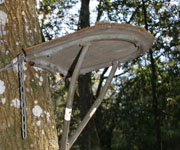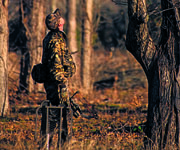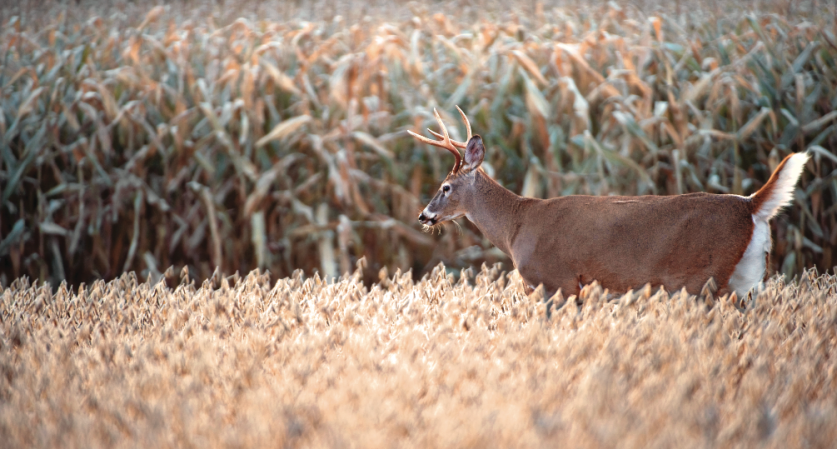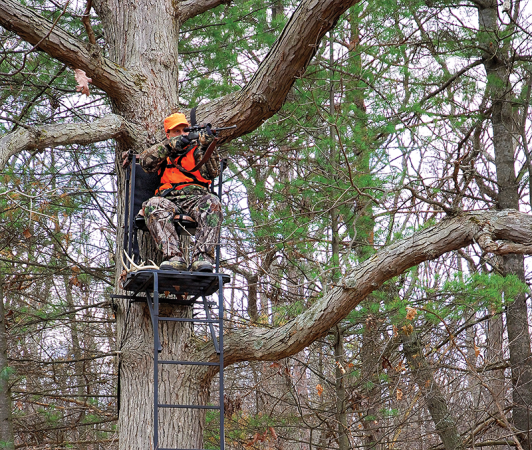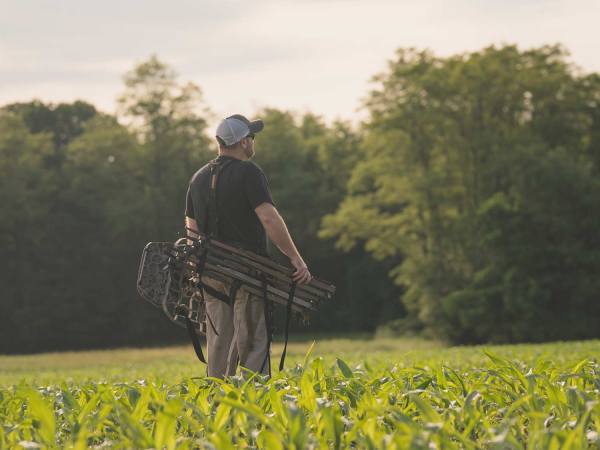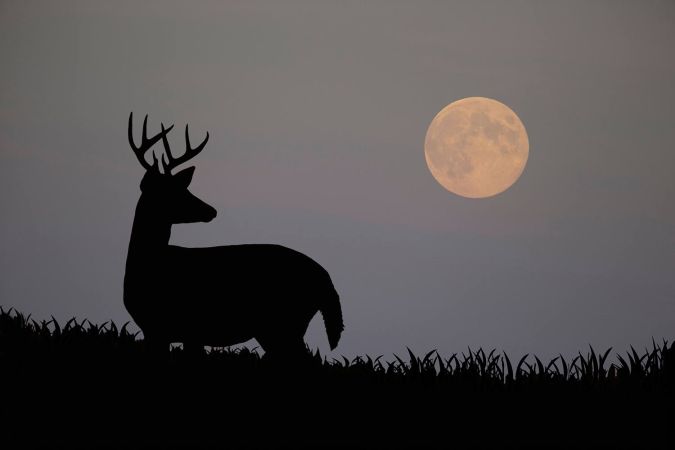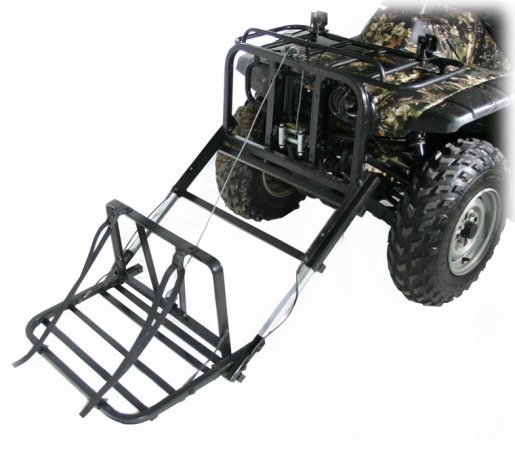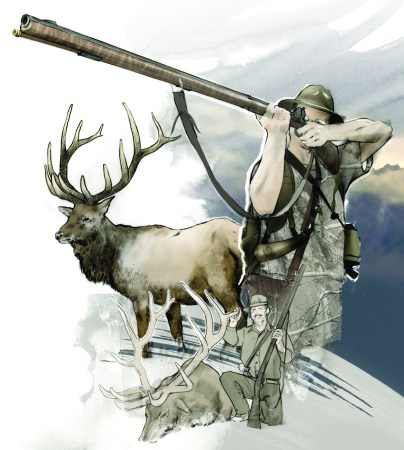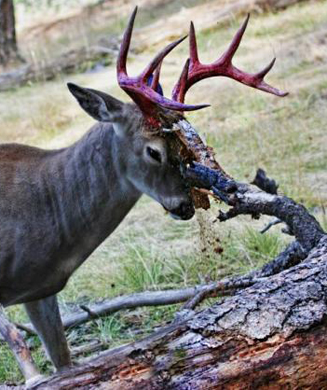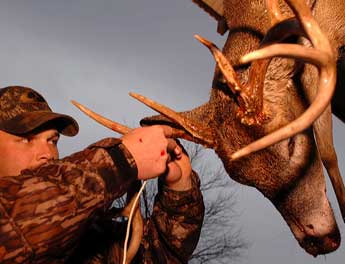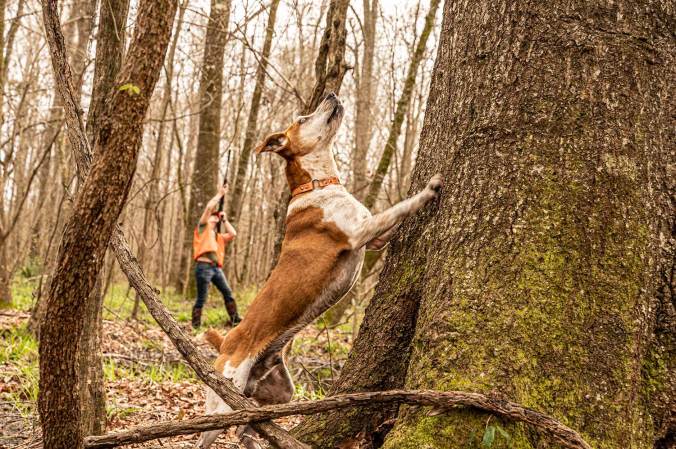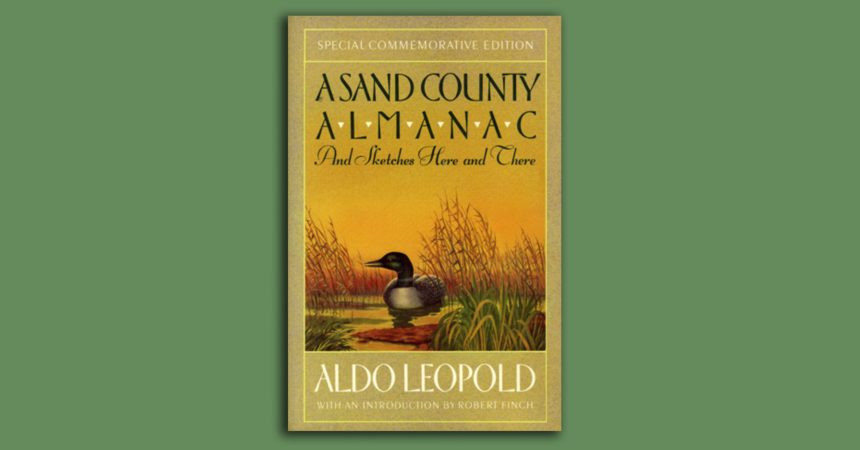We may earn revenue from the products available on this page and participate in affiliate programs. Learn More ›
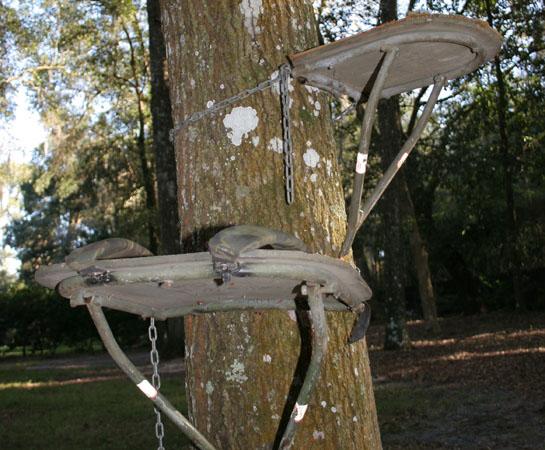
In 1947, Andy Anders was standing precariously in a giant live oak tree on Blackbeard Island, Georgia. It was the first public bowhunt for whitetail deer on that famous barrier island surrounded by saltwater, just north of the town of Brunswick.
Anders was one of only nine bowhunters participating, and he and his friends knew, as Native Americans did, that in order to effectively kill deer using traditional bows and cedar-shaft arrows, they had to get in the treetops to hide and ambush wary whitetails.
Anders, a Jacksonville, Florida, fireman, found the going tough in the timber. Rough bark and uncomfortable, irregularly shaped, shaky limbs made climbing into and hunting from the oaks less than fun. And dangerous, too. There had to be a better method than doing it like the Indians, he thought. There must be a way to construct a portable platform to bowhunt deer effectively in the timber.
Thus began the “Andy Stand,” maybe the first commercially made platform designed specifically for deer hunting from trees. Yet Anders is quick to point out that he didn’t devise the original concept of the fixed-position treestand he made of tubular metal and plywood.
“I was in the Pacific Theater in WW II, and my job was as countersniper rifleman,” Anders told me on a bowhunt to Blackbeard Island in 1977, as dozens of us archers were using his homemade stands to hunt deer. “I remembered that Japanese snipers used small platforms to sit on in the treetops, and they were made from native plants–mostly bamboo. They had a half-round frame rim, just big enough to sit on, made from tough bamboo strips. They wove a tight, durable base on the rim from vines and smaller bamboo strips. The frame was lashed to a tree with a vine strap, and the stand was supported by a Y-shaped bamboo post.”
Anders recalled that the fork of the Y attached to the stand base at its midpoints. The bottom of the Y was heavy bamboo, cut at a sharp angle so it could be jammed into tree bark, which supported the base that was sitting on it.
Anders’ original “Andy Stand” was exactly that design, except his frame and Y were made of tubular metal, and the stand base was made of 3/8-inch plywood instead of bamboo. And instead of a vine to wrap around the tree, he used a heavy chain.
“Other than that, the stand was the same as snipers used in the Pacific jungles during the 1940s,” Anders told me. “I guess you could say that the Japanese invented the modern deer treestand.”

